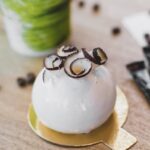Decorating a 3 layer cake is not just about creating a delicious dessert; it’s about taking your baking skills to the next level. When it comes to special occasions, a visually appealing cake can make all the difference. With the right techniques and tools, you can create a masterpiece that not only tastes incredible but also impresses your family and friends.
Mastering cake decorating techniques brings a sense of accomplishment like no other. The moment you see the final product, beautifully adorned with your own hands, is an indescribable feeling. And when your loved ones take their first bite and shower you with compliments on your stunning creation, it’s hard not to feel a swell of pride.
In this article, we will guide you through every step of decorating a 3 layer cake. From the essential tools you’ll need for cake decorating to building a stable and level base, layering and filling the cake, achieving a flawless finish with crumb coating, frosting techniques, creative decoration ideas, troubleshooting common challenges, and finally showcasing your delectable creation – we’ve got you covered.
So let’s dive in and unlock the secrets to creating beautiful cakes that will leave everyone in awe.
The Essential Tools You’ll Need for Cake Decorating
- In order to decorate a three-layer cake successfully, certain tools are essential in ensuring a well-decorated and visually appealing final product.
- One important tool is the cake turntable. This rotating stand allows bakers to easily access all sides of the cake while decorating, making it easier to achieve smooth and even frosting application.
- Another indispensable tool is the offset spatula. With its long, narrow shape and bent handle, an offset spatula is perfect for smoothing frosting, spreading fillings between layers, and creating sharp edges.
- Piping bags and tips are also crucial tools when it comes to adding decorative designs to a three-layer cake. These bags can be cloth or disposable plastic and are filled with frosting. Attached to them are specialized tips that create different shapes and patterns when squeezed onto the cake surface.
- Lastly, a bench scraper or straight edge scraper is useful for achieving a neat and professional finish on the cake’s exterior. This tool allows bakers to smooth out any imperfections and create clean lines.
- These tools, when used correctly, contribute greatly to the overall aesthetic appeal of the cake. While some baking enthusiasts may already have these tools in their kitchen, it is worth investing in them for those starting their cake decorating journey.
Preparing the 3 Layers
When it comes to decorating a 3 layer cake, it all starts with the foundation – the cake layers themselves. Baking and leveling the layers properly is essential for achieving a professional-looking, evenly stacked cake. In this section, we will guide you through the process of preparing the 3 layers for your beautifully decorated cake.
First, let’s talk about the cake recipe. It’s important to choose a recipe that is suitable for a three-layer cake. A classic vanilla or chocolate cake recipe often works well as a base for various flavors and fillings. If you don’t have a go-to recipe, there are plenty of reliable recipes available online that you can try. Make sure to follow the instructions carefully and measure your ingredients accurately for best results.
Once your cakes are baked, it’s crucial to allow them to cool completely before moving on to the decorating process. Cooling ensures that your frosting won’t melt or slide off the cake layers, giving you more control over your designs. It may be tempting to rush this step, but patience is key here.
Next comes leveling the tops of your cake layers. This step is crucial because uneven layers can lead to an unstable and lopsided final cake. To level the cakes, you can use a long serrated knife or even invest in a dedicated cake leveler tool. Carefully trim off any domed or uneven parts until each layer is flat and even.
Remember, practice makes perfect when it comes to baking and leveling cakes. If you’re new to baking or working with multiple layers, don’t be discouraged if your first attempt doesn’t turn out exactly as planned. With time and experience, you’ll develop an eye for perfectly baked and leveled cakes that will serve as a stunning canvas for your decorations.
To summarize:
- Choose a suitable recipe for a three-layer cake.
- Allow your cakes to cool completely before decorating.
- Level the tops of your cake layers for an even and stable base.
Now that your cake layers are ready, it’s time to move on to the next step: building a stable and level cake base.
Building a Stable and Level Cake Base
When it comes to decorating a three-layer cake, one crucial step that often gets overlooked is building a stable and level cake base. A sturdy foundation ensures that your cake layers won’t slide or tilt during the decoration process, allowing you to create a beautiful and professional-looking final product. In this section, we will discuss the steps to create a stable cake base and offer suggestions for added stability if needed.
Using a Cake Board or Sturdy Serving Plate
The first step in building a stable cake base is to place your bottom cake layer on a sturdy surface such as a cake board or a sturdy serving plate. A cake board provides support while allowing you to easily transport the finished cake. Make sure the size of your board matches the diameter of your cake layers to prevent any overhang.
If you don’t have access to a cake board, you can also use a sturdy serving plate as an alternative. Just ensure that it is flat and level, so your cake remains stable while decorating.
Preventing Sliding or Tilting
To prevent sliding or tilting of the cake layers, it’s essential to secure them properly with frosting or filling. After placing your bottom layer on the cake board or serving plate, spread a thin layer of frosting or filling over it using an offset spatula. This layer acts as glue and helps hold the layers together.
Once the bottom layer is secured, carefully place the second layer on top and repeat with another layer of frosting or filling. Finally, add the top layer and gently press down to ensure all layers are aligned.
Using Dowels or Supports
For taller cakes or cakes with multiple tiers, additional stability measures may be required. To prevent any sagging in between layers, consider using dowels or supports for added support.
To do this, measure your desired height and cut dowels or straws to the same length. Insert them vertically into the cake, spacing them evenly apart in a circle within the outer edge of the cake. This will prevent any sinking or shifting of the upper layers.
Alternatively, you can also use supports such as plastic dowel rods that you can easily find at baking supply stores. These provide consistent even support throughout the cake layers and are especially useful for large tiered cakes.
By building a stable and level cake base, you ensure that your 3 layer cake stays intact throughout the decorating process. Taking these steps to secure your cake layers not only makes it easier to work with but also allows you to create a visually stunning and structurally sound final product.
Layering and Filling the Cake
Layering and filling the cake is an essential step in creating a delicious and visually appealing 3 layer cake. This section will guide you through the process of evenly spreading frosting or filling between each cake layer, providing tips on achieving a tidy and smooth filling.
To begin, make sure your cake layers have cooled completely before proceeding with the filling. This will prevent the frosting or filling from melting or causing the cakes to become soggy. Once your cake layers are cool, place one layer on a sturdy cake board or serving plate.
Next, choose your desired filling. There are countless options to consider, such as fruit preserves, ganache, buttercream, or even a combination of flavors. Spread a generous amount of filling on top of the first cake layer using an offset spatula or the back of a spoon. Be sure to spread it evenly from edge to edge, ensuring that every bite of cake is filled with flavor.
Once you have spread the filling evenly on the first layer, gently place the second cake layer on top and repeat the process. Finally, add the third layer of cake and spread another layer of filling on top. The goal is to create beautiful layers that complement each other both in taste and presentation.
To achieve a tidy and smooth filling between each layer, use your offset spatula or a straight-edged knife to carefully trim any excess filling that may be oozing out from between the layers. This will ensure clean edges when you frost the exterior of the cake.
Remember to take your time during this step and pay attention to detail. A well-layered and properly filled 3 layer cake will not only be visually appealing but also provide an explosion of flavors with every slice.
Crumb Coating
When it comes to decorating a 3 layer cake, one of the most important steps is the crumb coating. This technique involves applying a thin layer of frosting to seal in any loose crumbs before adding the final layer of frosting. Crumb coating not only helps to achieve a clean and professional-looking design, but it also ensures that your final frosting layer is smooth and free from any unsightly crumbs.
To start the crumb coating process, make sure that your cake layers are completely cooled. If you try to frost a warm cake, it can cause the frosting to melt and slide off. Once your cake layers are cool, place one layer on a cake turntable or a sturdy serving plate. Use an offset spatula to spread a thin layer of frosting over the top and sides of the cake. Make sure to cover the entire surface with frosting.
After applying the initial thin layer, refrigerate the cake for about 20 minutes or until the crumb coat sets and becomes firm. This will help prevent any loose crumbs from mixing with your final layer of frosting. Once chilled, remove the cake from the refrigerator and proceed with adding your final layer of frosting.
| Type of Crumb Coating | Description |
|---|---|
| Buttercream Crumb Coat | A thin layer of buttercream frosting applied as a base coat. |
| Ganache Crumb Coat | A thin layer of ganache (chocolate and cream mixture) used as a base coat. |
By taking the time to properly crumb coat your 3 layer cake, you will ensure a flawless finish that is both visually appealing and delicious. The crumb coat provides a smooth foundation for your final layer of frosting and allows for better adhesion of any additional decorations you may choose to add. Don’t rush through this step as it sets the stage for a beautifully decorated cake that will impress your friends and family.
Next, we’ll explore the art of frosting and provide step-by-step instructions on achieving a smooth frosting finish on the exterior of your 3 layer cake.
The Art of Frosting
Decorating the exterior of a cake is where the true artistry comes in. The frosting not only adds a beautiful finish to the cake, but it also serves as a canvas for creating stunning designs and patterns. In this section, we will explore different frosting options and provide step-by-step instructions on achieving a smooth and flawless exterior for your 3 layer cake.
When it comes to selecting a frosting for your cake, there are several options to consider. Buttercream is a popular choice due to its versatility and delicious flavor. Swiss meringue buttercream offers a silky texture and pairs well with any flavor of cake. Fondant, on the other hand, provides a smooth, polished look and allows for intricate design work. Ultimately, the choice of frosting depends on personal preference and the desired aesthetic for your cake.
To achieve a smooth frosting finish on the exterior of your cake, start by applying a thin layer of frosting all over the cake using an offset spatula. This initial layer is called the crumb coat and helps seal in any loose crumbs. Once the crumb coat is applied, refrigerate the cake for about 15 minutes to allow it to set.
After chilling, apply another thicker layer of frosting starting from the top and working your way down around the sides of the cake. Use long sweeping motions with your spatula to create an even surface. Continue adding more frosting as needed until you have achieved your desired thickness and smoothness.
For those looking to add texture or designs to their cakes, there are numerous techniques that can be employed. Piping with different tips allows you to create borders, decorative accents, or even write messages on your cake. You can also experiment with using stencils or templates for precision designs or try incorporating fondant decorations like flowers or bows.
Remember that practice makes perfect when it comes to decorating cakes, so don’t get discouraged if your first attempts aren’t exactly as you envisioned. With time and practice, you will develop your own unique decorating style and techniques. Enjoy the process of frosting your cake, and soon you’ll have a beautifully decorated 3 layer cake that is sure to impress both visually and in taste.
Creative Decorating Techniques
Once you have mastered the basics of decorating a three-layer cake, it’s time to take your skills to the next level with creative decorating techniques. These techniques will add an extra touch of artistry and uniqueness to your cake, creating a stunning centerpiece for any occasion. From piping intricate designs to crafting fondant decorations, there are endless possibilities for elevating the appearance of your three-layer cake.
Piping
One popular technique for adding decorative elements to a cake is piping. Piping involves using a piping bag and various tips to create intricate designs on the surface of the cake. Whether you want to pipe detailed borders, elegant floral patterns, or personalized messages, mastering this skill will enable you to unleash your creativity.
To begin with piping, ensure that you have a good quality piping bag and tips in different shapes and sizes. Start by practicing basic piping techniques such as dots, lines, and swirls on a flat surface before moving on to decorate your cake. You can use buttercream or royal icing for piping depending on the desired effect and taste preference.
Fondant Decorations
Another exciting technique for enhancing your three-layer cake is working with fondant. Fondant allows you to create smooth finishes and sculpt intricate designs that are difficult to achieve with buttercream alone. With fondant, you can craft beautiful flowers, bows, ribbons, or even figurines that will make your cake truly unique.
To work with fondant, start by choosing ready-made fondant or making it from scratch using marshmallows and powdered sugar. Roll out the fondant into thin sheets and cover the entire cake or use smaller pieces for specific decorations. Invest in appropriate tools such as fondant rolling pins, cutters in various shapes, embossing mats, and modeling tools to help shape and texture your creations.
Adding Color and Texture
Adding pops of color and texture to your cake can truly make it stand out. Consider using food coloring or edible paints to create vibrant hues or paint intricate designs directly on the cake’s surface. You can also experiment with textured finishes by using tools like combs, brushes, or even stencils for added visual interest.
Edible glitter is another fun option for adding sparkle and glamor to your three-layer cake. Simply sprinkle it over the frosted surface or brush it onto specific decorations to create a magical effect. Edible flowers can also be used as stunning garnishes that not only add beauty but also bring a touch of nature to your creation.
By exploring these creative decorating techniques, you can take your three-layer cake from ordinary to extraordinary. Remember, practice makes perfect, so don’t be discouraged if your initial attempts don’t turn out exactly as planned. The key is to have fun, experiment with different techniques, and let your imagination run wild. With time and practice, you will develop your unique decorating style that will impress everyone who sees and tastes your masterpieces.
Troubleshooting and Final Tips for Decorating Success
Decorating a 3 layer cake can be a challenging endeavor, but with the right knowledge and preparation, you can overcome any obstacles that may arise. In this section, we will address common troubleshooting issues and provide final tips to ensure your decorating success.
One common challenge is uneven frosting, which can result in an unappealing appearance. To fix this issue, you can use a bench scraper or offset spatula to smooth out the frosting on the sides of the cake. Start at the bottom and work your way up, using long even strokes to create a uniform coating. If necessary, add more frosting as needed to achieve a smooth finish.
Another problem that may occur is lopsided layers when stacking the cakes. This can lead to an unstable structure and potentially cause your beautifully decorated cake to collapse. To prevent this from happening, make sure each layer is level before stacking them. Use a serrated knife or cake leveler to trim off any excess or uneven portions of the cake, ensuring that each layer sits flat on top of one another.
In addition to troubleshooting, here are some final tips for decorating success. First, always allow enough time for your cake layers to cool completely before decorating. This will prevent the icing from melting or becoming runny when applied. Secondly, practice patience when applying frosting or filling layers between cakes. Take your time to spread it evenly and smoothly using an offset spatula or icing smoother for best results.
Lastly, don’t be afraid to experiment and put your own creative spin on your 3 layer cake designs. Whether it’s trying out different piping techniques or incorporating unique decorations like edible flowers or fondant shapes, let your imagination run wild. Remember that practice makes perfect, so keep experimenting until you find your own unique decorating style.
With these troubleshooting tips and final advice in mind, you are well-equipped to tackle decorating a 3 layer cake with confidence. Be sure to stay calm and enjoy the process, as this is where your creativity can truly shine. Good luck, and may your beautifully decorated cakes bring joy to your loved ones and celebrations.
Conclusion
In conclusion, decorating a 3 layer cake is an art that takes your baking skills to the next level. By mastering the tools and techniques outlined in this article, you can create visually appealing cakes that will impress your loved ones on special occasions. The sense of accomplishment and satisfaction that comes from receiving compliments on your beautiful cake is unmatched.
Throughout this article, we have provided detailed instructions on the essential tools needed for cake decorating, as well as tips for preparing the cake layers, building a stable base, layering and filling the cake, and achieving a flawless finish with crumb coating and frosting. We explored various creative decorating techniques and offered troubleshooting solutions for any challenges you may encounter along the way.
Now that you have learned these invaluable tips and tricks, it’s time to showcase your delectable 3 layer cake to your loved ones. The final reward comes from their amazed expressions as they see and taste the masterpiece you have created. Your hard work and dedication have paid off, and you can take pride in knowing that you have achieved something truly special.
We encourage you to share your cake decorating journey with others and celebrate your creations. Whether it’s through social media platforms or sharing with friends and family during gatherings, let others appreciate the beauty of your cakes. And remember, each cake is a new opportunity to practice and experiment to discover your unique decorating style.
So go ahead, unleash your creativity, bake stunning 3 layer cakes, and enjoy the rewards of creating edible works of art that bring joy and delight to others. Happy baking.
Frequently Asked Questions
How do you put together a 3 layer cake?
To put together a 3 layer cake, start by preparing the cake batter according to the recipe instructions and divide it evenly into three greased and lined round cake pans. Bake the cakes until they are golden brown and a toothpick inserted into the center comes out clean. Once the cakes have cooled completely, level off the tops if necessary using a serrated knife to ensure they are all even in height.
Place one cake layer on a serving plate or cardboard round, spread a layer of frosting or filling of your choice on top, and place another layer on top, repeating this process with each layer. Make sure to spread an even layer of frosting on the outside of the cake to create a smooth appearance before decorating as desired.
How do you stack a 3 tier cake?
Stacking a 3-tier cake requires proper support to prevent it from collapsing. Start by preparing each tier separately using appropriate-sized cake pans and allow them to cool completely before proceeding. To stack them, dowel rods or food-safe wooden skewers can be used as supports. Begin by placing the bottom tier on a sturdy base such as a decorated cake board or plate.
Insert dowel rods into this tier in various spots where the next tier will sit; make sure they are trimmed to be level with the top surface of this tier. Next, add a thin layer of frosting or filling on top of this tier before placing the second tier directly on top, aligning it carefully. Repeat this process for additional tiers while ensuring that dowels are inserted for support between each tier. Finally, decorate your stacked cake as desired.
How do you make a layered cake look good?
Making a layered cake look good involves several key steps in both assembly and decoration. Firstly, it is important to ensure that each cake layer is leveled off so that all layers have an even height for an aesthetically pleasing appearance when sliced. Secondly, spreading an even amount of frosting or filling between each layer will create uniformity and provide stability while preventing the cake from sliding.
To achieve a polished finish, a crumb coat can be applied: a thin layer of frosting that seals in any loose crumbs before adding the final layer of frosting. This smooth base will ensure a clean and professional look for further decorations such as piping designs or fondant coverings. Pay attention to details like using a cake comb or spatula to create textured patterns on the sides of the cake, and arranging any additional decorations thoughtfully and symmetrically to enhance its overall appeal.

Welcome to my blog about home and family. This blog is a place where I will share my thoughts, ideas, and experiences related to these important topics. I am a stay-at-home mom with two young children. I hope you enjoy reading it! and may find some helpful tips and ideas that will make your home and family life even better!





